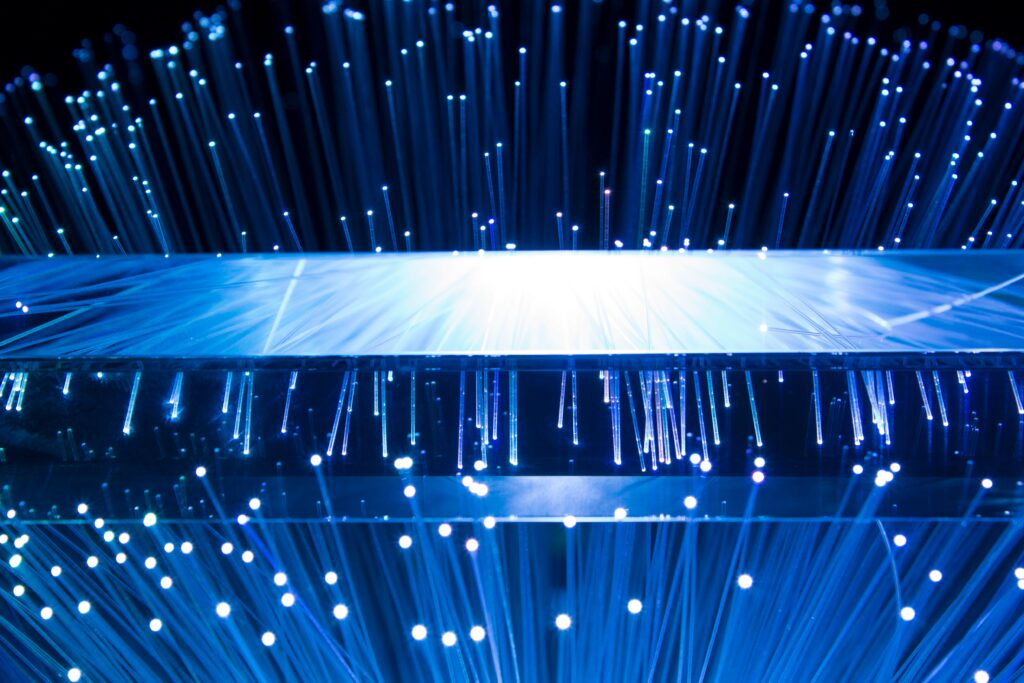Smart buildings are getting smarter. Rapidly evolving bandwidth, latency and data transmission rate expectations necessitate a better signal transmission infrastructure. Although fiber optics was seen as futuristic just a few years ago, it is quickly becoming the new standard. How can building automation companies use it to future-proof their projects?
Why Smart Buildings Need Fiber Optic Future-Proofing
As smart buildings make technologies like artificial intelligence, 8K video streams and advanced Internet of Things (IoT) devices the norm, the demand for data increases. AI alone has put such a massive strain on data centers — development and hosting are resource-intensive — that many are already seeking to replace copper connections with fiber optic technology.
While many still consider conventional copper lines enough, there is simply no more practical choice than fiber optic cables for transmitting signals. Any alternative would require immense tradeoffs, be unnecessarily costly and potentially drive away business.
If smart buildings remained a fringe development, professionals could be forgiven for sticking with a conventional data transmission infrastructure. However, their popularity is soaring among property owners. Their penetration rate in the residential sector alone will reach 75.1% by 2028, a 43.3% increase from 2024.
What Makes Fiber-Optic Infrastructure Future-Proof?
Since fiber optic infrastructure cannot be affected by electrical or magnetic interference and transmits data at a much higher bandwidth than copper, its speed is unparalleled. It outperforms conventional alternatives in every regard, making it the optimal choice for future-proofing smart buildings.
In addition to enabling better latency, transmission rates and bandwidth, fiber optics is also more secure. It does not radiate easily identified electromagnetic signals, making detection more difficult. Moreover, someone would need to physically dig up and cut open the cables to intercept and tamper with the light signals, deterring them from even attempting.
The Implications of Fiber Optic Technology Advancement
Fiber optic technology is rapidly evolving as telecommunications companies and internet service providers (ISPs) compete to offer the fastest speeds and lowest latency. In fact, one research team recently set the world record. They transferred data at 301 Tbps, 4.5 million times faster than the average residential broadband speed.
Just months later, in July 2024, a team of international researchers broke that world record. Their record-setting 402 Tbps data rate was four times faster than existing commercial-grade options — even the best commercial systems are pushing 100 Tbps at most — and 33% better than the previous record.
There’s arguably never been a better time to future-proof smart buildings with fiber optics because this technology is nearing its peak. Early adopters will gain competitive advantages. While leveraging standard cables is fine, decision-makers should look to the future to set themselves up for success and maximize their investment’s impact.
How to Future-Proof Buildings’ Fiber Optic Infrastructure
Since fiber optic technology is rapidly evolving, building automation professionals should consider how to future-proof it when incorporating it into smart buildings. They can either invest in these solutions themselves or partner with a reputable third party to do it for them.
- Leverage Optical Amplifiers
Building automation professionals should consider optical amplifiers and optical gain equalizers. These technologies can open up new wavelength bands that are rarely used in conventional systems, enabling much faster connections even through a single standard optical fiber. In other words, these technologies can be applied to cables already in the ground.
- Utilize Cable Splicing
Upgrading existing fiber optic infrastructure may require a high initial investment, but the payoff will be worth it if technological advancement continues at its current pace. Since cable splicing is becoming more common, it is an effective tool for joining various fibers to eliminate connectivity gaps during retrofitting.
- Consider Advanced Technologies
Advanced fiber optic technologies may give building automation professionals a competitive edge. For instance, the first ISP to deploy end-to-end hollow-core — cables using air-filled channels instead of glass — reported a 150% increase in data transmission speed and a 33% lower latency.
- Use Higher Fiber Counts
Although a higher fiber count requires a more significant upfront investment, it ensures scalability and offers greater performance benefits. Companies may hesitate to commit, but it will pay off when they avoid a costly retrofitting process. At the rate this technology advances, they could see returns within a few years.
Considerations for Utilizing a Fiber Optic Infrastructure
Distance is one of the most noticeable limiters of fiber optic infrastructure. The higher the bit rate, the higher quality the fiber must be to prevent signal distortion. Even with the best equipment, light signals can only travel so far before minor discrepancies in wavelength or arrival time cause data loss.
Reputable providers have extensive infrastructures to prevent distance-related issues. However, this inadvertently creates another problem — vendor lock-in. The high costs installation costs and location barriers may force building automation professionals to stay with a third-party vendor despite subpar service or non-competitive pricing.
Although moving away from legacy infrastructure and toward fiber optics is quickly becoming a must-have for anyone developing smart buildings or technologies, these considerations are essential. They may not influence a company’s decision to upgrade, but they should be considered as deciding factors.
The Bottom Line of Future-Proofing Smart Buildings
As data demands evolve, building automation professionals must use fiber optic infrastructure to ensure their smart devices can rapidly exchange, process and download data. Whether they partner with a local telecommunications company or invest in this technology themselves, they should consider utilizing it sooner rather than later to gain the benefits of early adoption.



